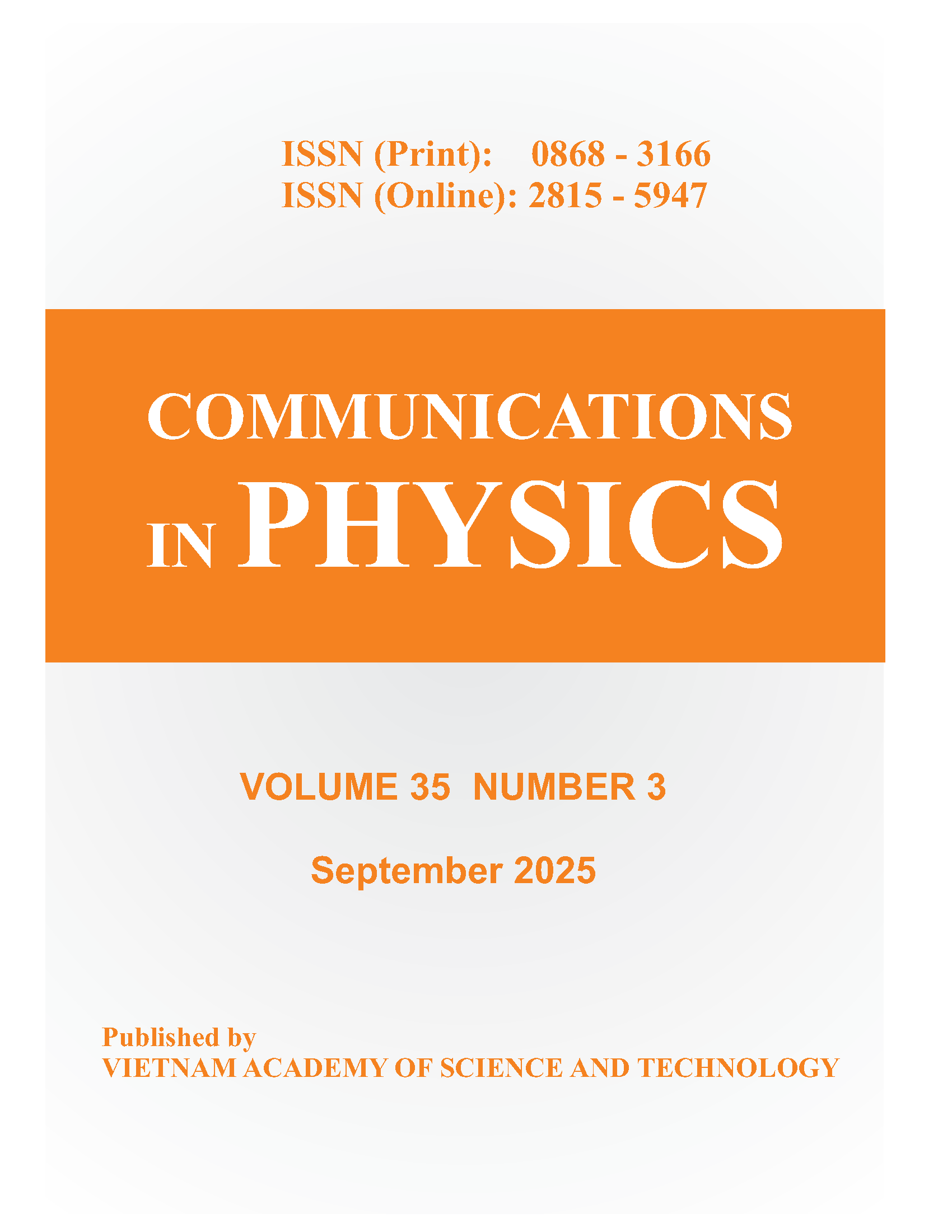Scotogenic gauge mechanism for neutrino mass and dark matter
Author affiliations
DOI:
https://doi.org/10.15625/0868-3166/20209Abstract
Scotogenic is a scheme for neutrino mass generation through the one-loop contribution of an inert scalar doublet and three sterile neutrinos. This work argues that such inert scalar doublet is a Goldstone boson mode associated with a gauge symmetry breaking. Hence, the resultant scotogenic gauge mechanism is very predictive, generating neutrino mass as contributed by a new gauge boson doublet that eats such Goldstone bosons. The dark matter stability is manifestly ensured by a matter parity as residual gauge symmetry for which a vector dark matter candidate is hinted.
Downloads
References
PARTICLE DATA GROUP collaboration, Review of Particle Physics, PTEP 2022 (2022) 083C01.
E. Ma, Verifiable radiative seesaw mechanism of neutrino mass and dark matter, Phys. Rev. D 73 (2006) 077301.
Z.-j. Tao, Radiative seesaw mechanism at weak scale, Phys. Rev. D 54 (1996) 5693.
E. Ma, I. Picek and B. Radovˇci´c, New Scotogenic Model of Neutrino Mass with U(1)D Gauge Interaction, Phys.
Lett. B 726 (2013) 744.
E. Ma, N. Pollard, O. Popov and M. Zakeri, Gauge B˘L model of radiative neutrino mass with multipartite dark matter, Mod. Phys. Lett. A 31 (2016) 1650163.
S. K. Kang, O. Popov, R. Srivastava, J. W. F. Valle and C. A. Vaquera-Araujo, Scotogenic dark matter stability from gauged matter parity, Phys. Lett. B 798 (2019) 135013 [hep-ph/1902.05966].
P. V. Dong, H. T. Hung and T. D. Tham, 3-3-1-1 model for dark matter, Phys. Rev. D 87 (2013) 115003.
P. V. Dong, The Dark Side of Flipped Trinification, JHEP 04 (2018) 143.
P. V. Dong, Novel imprint of a vector doublet, Phys. Rev. D 104 (2021) 035001.
P. Escribano, M. Reig and A. Vicente, Generalizing the Scotogenic model, JHEP 07 (2020) 097.
P. Van Dong, Interpreting dark matter solution for B-L gauge symmetry, Phys. Rev. D 108 (2023) 115022.
P. Van Dong and D. Van Loi, Scotoseesaw model implied by dark right-handed neutrinos, arXiv:hep-ph/2311.09795.
C. H. Nam, D. Van Loi, L. X. Thuy and P. Van Dong, Multicomponent dark matter in noncommutative B - L gauge theory, JHEP 12 (2020) 029.
R. Barbieri, L. J. Hall and V. S. Rychkov, Improved naturalness with a heavy Higgs: An Alternative road to LHC physics, Phys. Rev. D 74 (2006) 015007.
J. R. Ellis, A. Ferstl and K. A. Olive, Reevaluation of the elastic scattering of supersymmetric dark matter, Phys. Lett. B 481 (2000) 304.
LZ collaboration, First Dark Matter Search Results from the LUX-ZEPLIN (LZ) Experiment, Phys. Rev. Lett. 131 (2023) 041002.
M. Lindner, M. Platscher and F. S. Queiroz, A Call for New Physics : The Muon Anomalous Magnetic Moment and Lepton Flavor Violation, Phys. Rept. 731 (2018) 1.
MEG collaboration, Search for the lepton flavour violating decay m+ ! e+g with the full dataset of the MEG experiment, Eur. Phys. J. C 76 (2016) 434.
Downloads
Published
How to Cite
Issue
Section
License
Communications in Physics is licensed under a Creative Commons Attribution-ShareAlike 4.0 International License.
Copyright on any research article published in Communications in Physics is retained by the respective author(s), without restrictions. Authors grant VAST Journals System (VJS) a license to publish the article and identify itself as the original publisher. Upon author(s) by giving permission to Communications in Physics either via Communications in Physics portal or other channel to publish their research work in Communications in Physics agrees to all the terms and conditions of https://creativecommons.org/licenses/by-sa/4.0/ License and terms & condition set by VJS.











